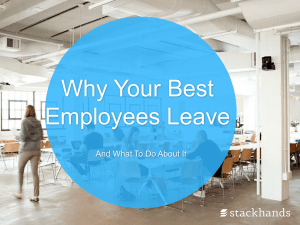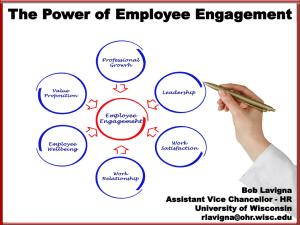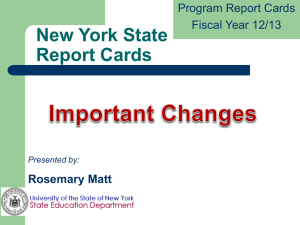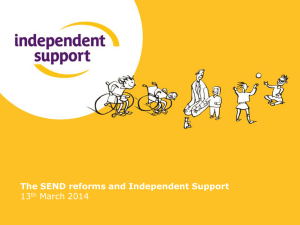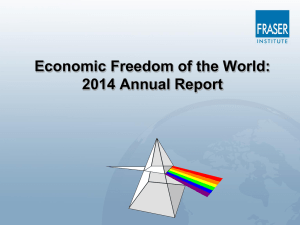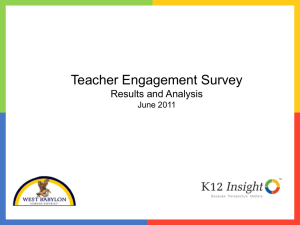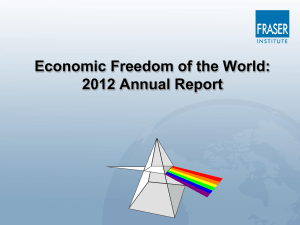Employee Engagement - the evidence
advertisement
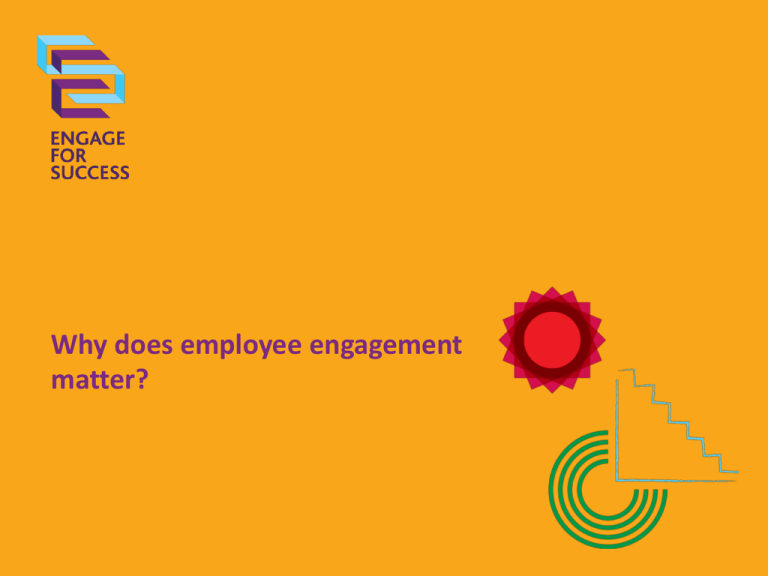
Why does employee engagement matter? Why is it Important? 70% 6% 20% 30% Percentage of employees who do not trust their managers The UK has 6% lower average engagement levels than other large economies (Kennexa, 2011) Percentage below G7 productivity levels (International comparison of productivity gap) Percentage of employees actively engaged Imagine if 30% of lights didn’t work… …OR 30%30% OF of COMPUTERS! Imagine lights didn’t work… Organisational Case Study Submissions Research Houses and other Organisations Linkages to Employee Engagement Organisations with higher engagement level Outperformed the total stock market index Posted total shareholder returns 22% higher than average Twice the annual net income 4.2 times more likely to deliver above average profit 15% of a store’s year on year growth can be explained by the level of engagement 12% higher growth in sales Companies with engagement scores in the top quartile averaged 12% higher customer advocacy 84% of ‘Worlds Most Admired’ Companies stated their efforts to engage employees had strengthened customer relationships Higher engagement levels have lower patient mortality rates 7 percentage points difference in customer service scores between top 10% and bottom 10% Contracts delivered by engaged employees showed higher customer loyalty Engagement scores in the top quartile averaged 18% higher productivity 71% of companies with above average employee engagement performed above their sector average Engaged staff able to talk to additional 800 customers per year Higher sales and lower absence 59% of engaged employees say work brings out their most creative ideas – only 3% of disengaged employees agree Engaged employees are more likely to search out new methods, techniques and transform innovative ideas £26m of improvement opportunities Engaged employees in the UK take an average of 2.7 sick days per year, while disengaged staff take 6.2 Sickness absence costs the UK economy £17 billion per year Absence levels reduced by 26% Higher engagement levels have lower absence levels High levels of engagement are positively associated with wellbeing Strong correlation between engagement and wellbeing Bottom 10% has 2x voluntary turnover Bottom 10% ranked by employee engagement had almost twice the voluntary turnover Engaged Employees: Perform better, work harder, longer, smarter Work more vigorously, offer innovative suggestions Employee Engagement: The Evidence CEOs call on UK to deliver GDP growth by better engaging employees at work. A high-level task force of some of the UK’s most recognisable organisations is calling for every leader and manager across the economy to play their part in tackling the UK’s employee engagement deficit. Analysis of the evidence shows that: Only around a third of UK employees say they are actively engaged at work. 20 million workers are not delivering their full capability or realising their potential at work. of people said they have more to offer in skills and talent than they are currently being asked to demonstrate at work. UK productivity was 20% lower than the rest of the G7 in 2011.0 Employee Engagement: Statistics and Case Studies PROFIT Companies with engagement scores in the top 25% had twice the annual net profit. CUSTOMER SATISFACTION REVENUE GROWTH Organisations in the top quartile of engagement scores demonstrated revenue growth 2.5 times greater than those in the bottom quartile. Companies with top quartile engagement scores average 12% higher customer advocacy. Employee Engagement: Statistics and Case Studies PRODUCTIVITY Organisations in the top quartile of employee engagement scores had 18% higher productivity. INNOVATION 59% of engaged employees said that their job brings out their most creative ideas. EMPLOYEE TURNOVER Companies with high levels of engagement show turnover rate 40% lower than companies with low levels of engagement. Employee Engagement: Statistics and Case Studies EFFICIENCY An insurance company found that teams with higher engagement had 35% less down time between calls – equivalent to one ‘free of charge’ employee to every eight employees. HEALTH & SAFETY Organisations with engagement in the bottom quartile average 62% more accidents than those in the top. Engage for Success www.engageforsuccess.org @engage4success


